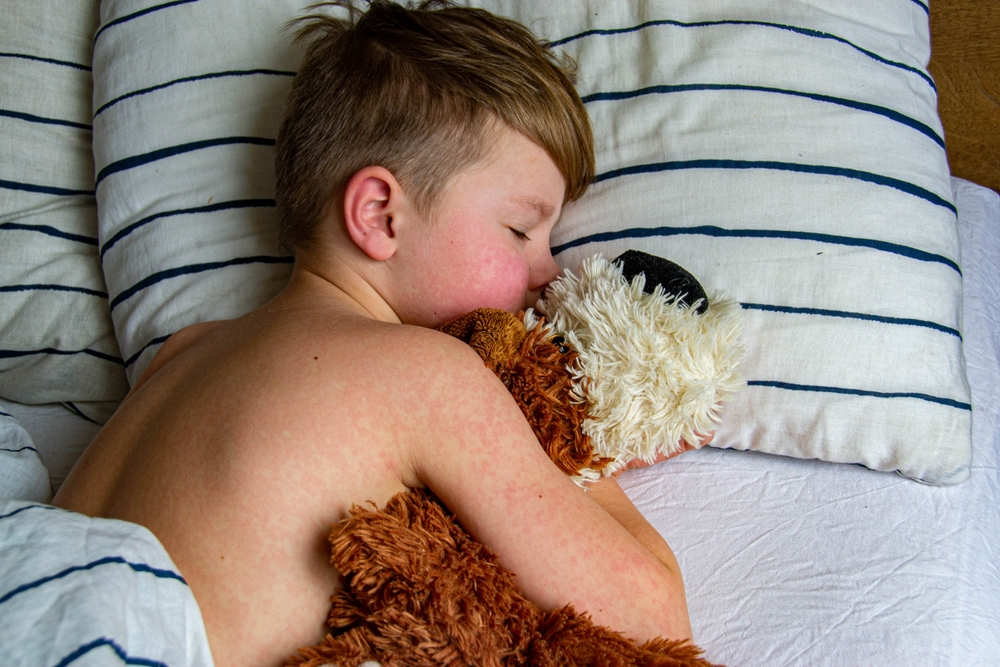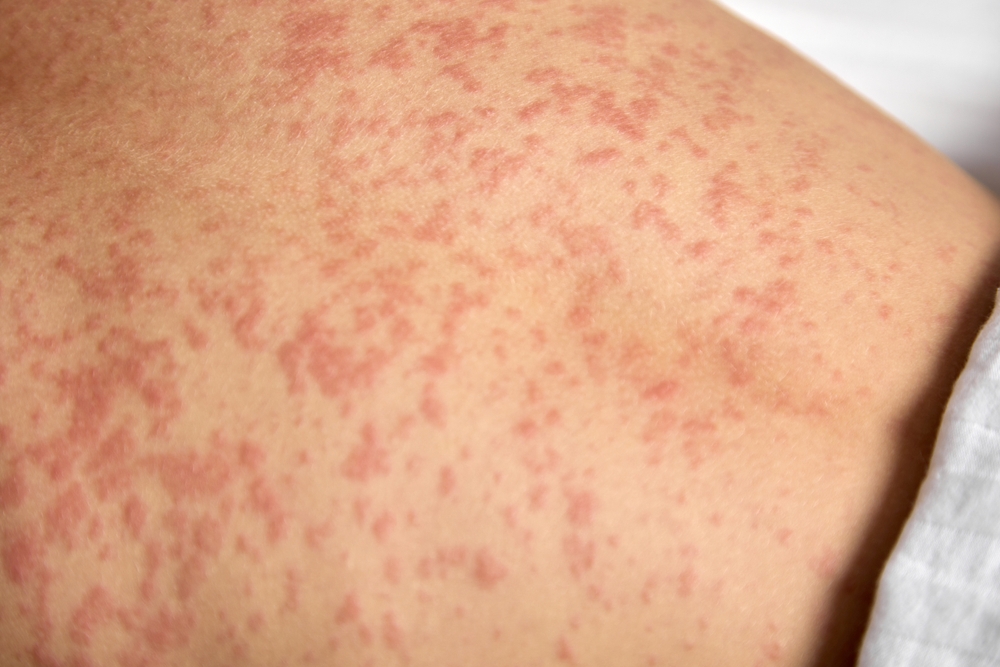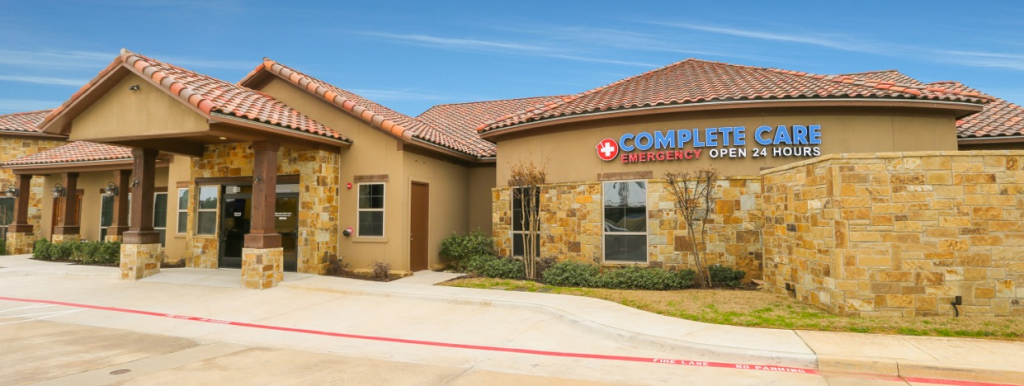How Long Do Measles Last?
Children's Health
•
Nov 1, 2024

Parents and adults alike often find themselves anxious at the thought of having to endure the measles, and wondering, “How long do measles last?” The concern is understandable; measles, also known as the rubeola virus, is a highly contagious viral infection that can cause significant discomfort and, in some cases, lead to serious complications.
So, knowing how long the illness typically lasts can help individuals and caregivers prepare for the recovery process, manage expectations, and plan for necessary time off work or school.
Measles symptoms generally last about 7-10 days after the first signs appear, with the rash lasting between 5-6 days in particular.
To better prepare you and your family, we’ll discuss the progression of measles, including its incubation period, symptoms, recovery, and potential complications. However, if you’re concerned about any symptoms you or a loved one are experiencing, don’t hesitate to visit your nearest Complete Care freestanding emergency room for immediate medical care.
How long does a measles rash last?
The measles rash typically appears 3 to 5 days after the first symptoms begin. Once it starts, the rash usually lasts for about 5 to 6 days before it begins to fade. During this time, the rash goes through several stages:
- It starts as flat red spots that appear on the face, usually near the hairline.
- Over the next few days, the rash spreads downward to the neck, trunk, arms, legs, and feet.
- The spots may join together as they spread across the body.
- After a few days, the rash begins to fade, following the same pattern it appeared, from head to toe.

Measles rash picture showing the characteristic red spots covering a young boy’s back during the infection.
This rash is your body’s immune response to the measles virus. When the virus enters your body, it triggers your immune system to fight back and causes inflammation in your skin, which shows up as the red, spotty rash.
What helps measles go away?
While the rash typically lasts about 5 to 6 days, several factors can influence how long it takes to heal:
- Nutrition: Eating a balanced diet rich in vitamins A, C, and E can support your immune system and skin health. Foods high in these vitamins include:
- Vitamin A: Sweet potatoes, carrots, spinach
- Vitamin C: Citrus fruits, strawberries, bell peppers
- Vitamin E: Almonds, sunflower seeds, avocados
- Rest: When you’re resting, your body can direct more energy towards fighting the virus and repairing damaged skin cells.
- Hydration: Proper hydration supports all your body’s systems, including your immune system and skin. Aim for at least eight glasses of water daily, more if you have a fever.
- Stress levels: High stress can slow down healing. Try to keep stress levels low through relaxation techniques like deep breathing or gentle stretching.
- Environmental factors: Keep your skin cool and avoid hot showers or baths, which can irritate the rash. Wear loose, soft clothing to prevent friction on the skin.
- Scratching: Avoid scratching the rash, even if it’s itchy. Scratching can lead to skin damage and potential infections, prolonging healing time.
- Medication: Some medications, like acetaminophen or ibuprofen, can help reduce fever and discomfort, potentially supporting faster healing. However, always consult with a healthcare provider before taking any medication.
Remember, everyone’s body responds differently, so healing times can vary. If you’re concerned about how long your rash lasts or if you’re not seeing improvement, it’s always best to consult a healthcare professional for proper measles treatment.
How long does it take to fully recover from measles?
While the measles rash typically lasts for about 5 to 6 days, it’s important to note that this can vary from person to person. Some individuals may experience a shorter duration, with the rash fading after just four days, while others might have the rash for up to a week.
Factors that can influence the duration of the rash include:
- The strength of your immune system
- Your overall health status
- Whether you’ve been vaccinated (which can lead to a milder case if you do contract measles)
- The strain of the measles virus
- Your age (children often recover more quickly than adults)
If you don’t see the rash starting to fade after about five days, or if it worsens instead of improving, this could indicate complications or a different condition altogether. Don’t hesitate to seek medical care as soon as possible to ensure your condition doesn’t worsen.
Signs that measles rash is getting better
As the rash begins to heal, you’ll notice several signs of improvement:
- The bright red spots will start to fade and may take on a brownish hue.
- The skin will become less swollen and raised.
- If the rash is itchy, this sensation should lessen as healing progresses.
- As the rash heals, you might notice some mild skin peeling, similar to what happens after a sunburn.
- Remember, the rash typically fades in the same order it appeared — from head to toe.
Even after the rash has faded, your skin might appear slightly discolored for a week or two. This is normal and doesn’t mean you’re still contagious, but you should always follow your doctor’s advice about when it’s safe to return to normal activities.
Should you go to the ER for measles?
While measles symptoms often resolve on their own, there are situations where seeking immediate medical care at an emergency room is crucial. Understanding when to go to the ER can help prevent serious complications and reduce the risk of spreading the virus.
Consider going to the ER if you experience the following:
- You have a high fever (above 103°F or 39.4°C) that doesn’t respond to fever-reducing medications.
- You experience severe difficulty breathing or chest pain.
- You develop signs of a skin infection, such as increased redness, warmth, swelling, or pus around the rash areas.
- You have severe headaches, especially if accompanied by neck stiffness or confusion.
- You’re pregnant and suspect you have measles.
- The person with measles is an infant, elderly, or has a weakened immune system.
It’s also important to note that measles can be easily confused with other conditions, especially in the early stages. For instance:
- RSV symptoms and treatments: Respiratory Syncytial Virus (RSV) can present with similar initial symptoms to measles, such as fever, runny nose, and cough. Unlike measles, RSV doesn’t typically cause a rash, although it can. So, when does RSV rash appear? If you see a rash along with respiratory symptoms, it’s important to get checked out as it could be measles or another condition.
- Roseola infantum: This condition, common in young children, can be mistaken for measles. It causes a high fever followed by a rash, but the rash appears as the fever breaks, unlike in measles, where the rash appears while the fever is still high.
Is measles contagious?
Yes, measles is highly contagious and can lead to sickness in schools if not properly managed. If you suspect measles, call your healthcare provider or the ER before arriving to allow them to take precautions to prevent spreading the virus to others.
While you should seek medical care when necessary, it’s equally important to stay home if you have mild symptoms to prevent spreading the virus. It’s best to isolate for at least four days after you develop the rash, as this is when you are the most contagious. Always follow the advice of healthcare professionals and public health guidelines.
Complete Care offers 24/7 measles treatment in Texas and Colorado Springs
How long do measles last? While the entire course of measles typically spans 7-10 days, with the characteristic rash lasting 5-6 days, it’s important to monitor symptoms closely and seek medical attention if you have any concerns about the progression of the illness. Staying alert and keeping in contact with medical professionals is crucial for managing expectations and making sure you receive proper care.
If you’re worried about measles symptoms or any other medical concerns, Complete Care’s freestanding emergency rooms are here to help. With locations across Texas (Austin, Corpus Christi, Dallas/Fort Worth, East Texas, Lubbock, and San Antonio) and in Colorado Springs, our expert medical staff is available 24/7 to provide prompt, professional care.
More Helpful Articles by Complete Care:
- Mono Throat vs. Strep Throat: What’s the Difference?
- What is a Viral URI?
- How to Find the Nearest Emergency Room
- Extreme Dehydration Symptoms
- When to Go to the ER: A Comprehensive Guide
